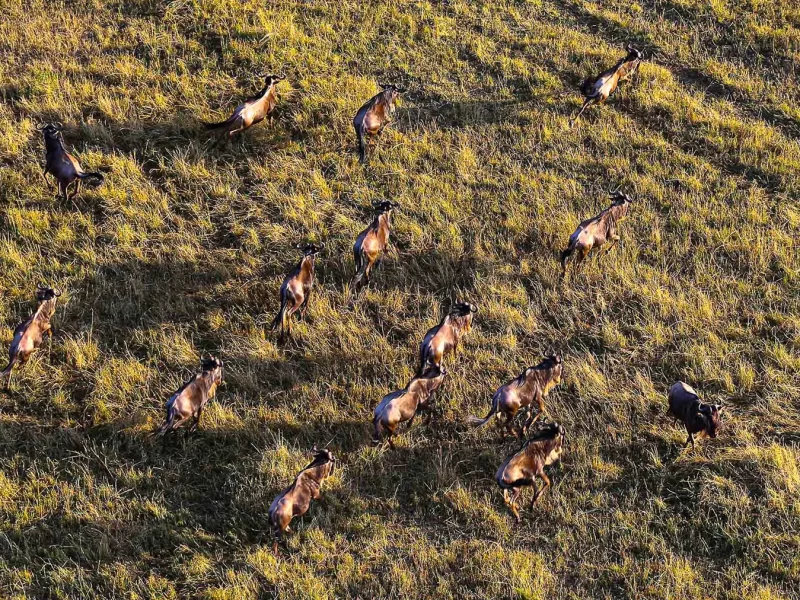
4 Days Kilimanjaro Extension Safari – Flying In Option
This itinerary intends to take travelers into one of the largest wildlife sanctuaries in the world, the Serengeti National Park. Central Serengeti is home to
Some places make you feel like a spectator in nature’s greatest show. Safaris in Tanzania is just that—a front-row seat to the raw, untamed wilderness where life unfolds in its purest form. Watching a lion stretch lazily under the acacia trees, a herd of elephants ambling to a watering hole, or a cheetah sprinting across golden plains— is a memory you carry forever.
The Serengeti is famous for the Great Migration, where millions of wildebeest and zebras move across the land in search of fresh grass. Ngorongoro Crater is a natural wonder, home to rhinos, hippos, and countless other animals in a landscape unlike any other. Tarangire National Park has the largest elephant herds in East Africa, while Lake Manyara is a paradise for flamingos.
For a different kind of adventure, Lake Eyasi introduces travellers to the Hadzabe people, one of Tanzania’s last hunter-gatherer tribes. Tanzania Safari Packages brings all these experiences together, combining wildlife, culture, and breathtaking scenery. Dismass Kilimanjaro Experience creates a safari where comfort and adventure go hand in hand, making every moment in the wild truly special.

This itinerary intends to take travelers into one of the largest wildlife sanctuaries in the world, the Serengeti National Park. Central Serengeti is home to
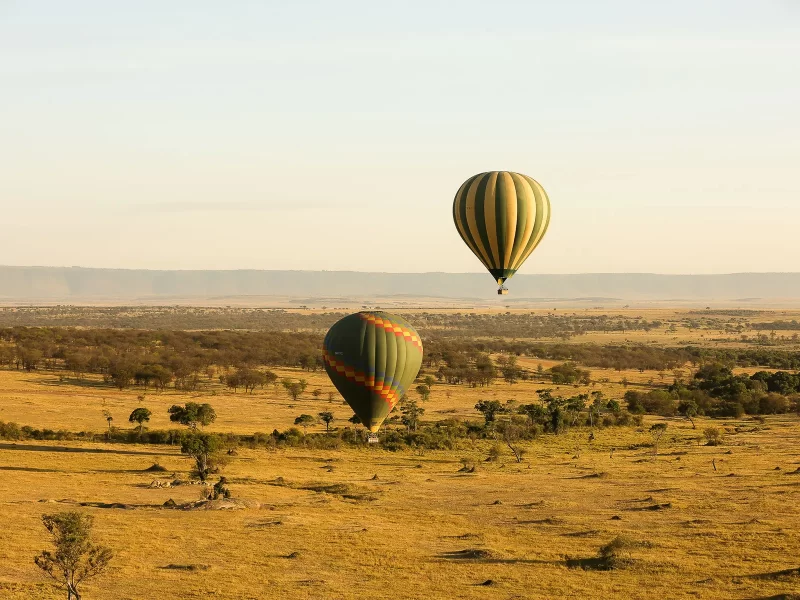
This itinerary, ideal for June to mid-July, highlights the Great Migration near Grumeti River in Western Serengeti. Witness dramatic predator-prey interactions and explore Central Serengeti’s
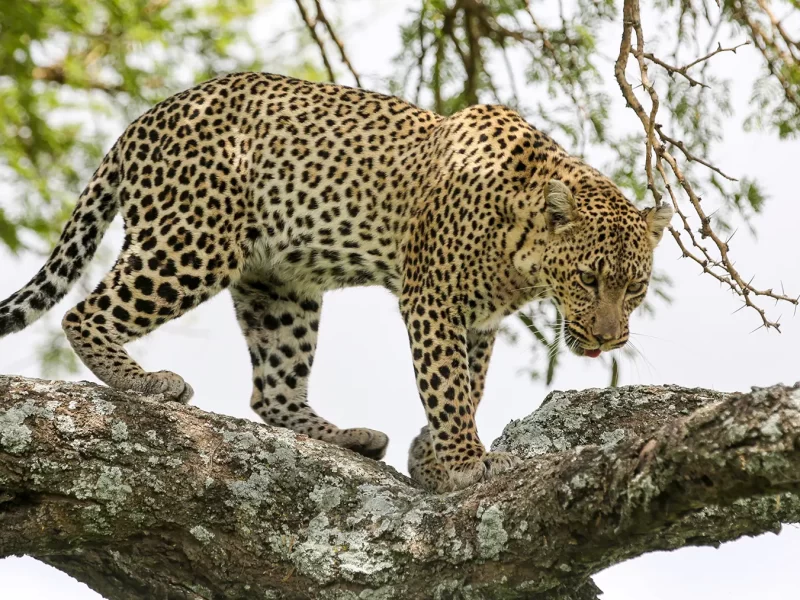
This itinerary explores UNESCO heritage sites like Serengeti for the Great Migration, Ngorongoro Crater’s Big Five, and Lake Manyara. Starting in Arusha, East Africa’s tourism

This itinerary offers an unforgettable journey through Tanzania’s renowned parks, including Tarangire National Park, famous for tree-climbing lions, Serengeti National Park, home to the big

Experience the best of Tanzania’s Northern Circuit and Zanzibar on this 12-day adventure. Enjoy thrilling game drives in iconic parks like Serengeti and Ngorongoro Crater,
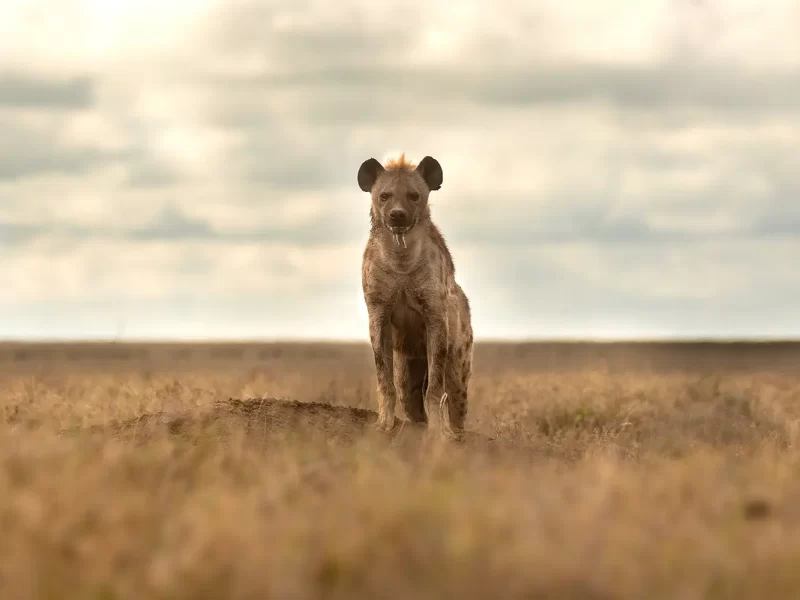
Discover Tanzania’s breathtaking wildlife and scenery on this compact 3-day safari. Perfect for travelers with limited time, this adventure takes you to Tarangire National Park,
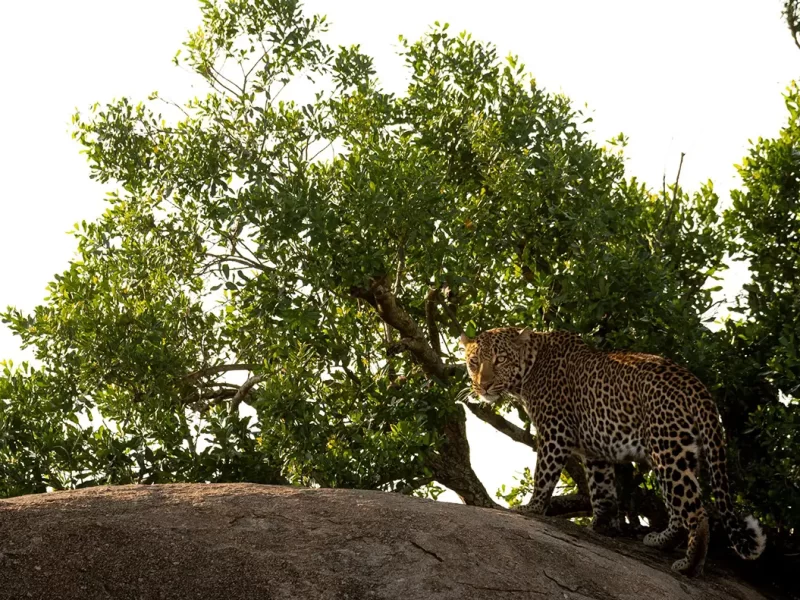
Explore Tanzania’s iconic wildlife and breathtaking landscapes on this 5-day safari. Visit world-renowned parks like Tarangire, Ngorongoro, and the Serengeti. Encounter diverse wildlife, enjoy luxurious
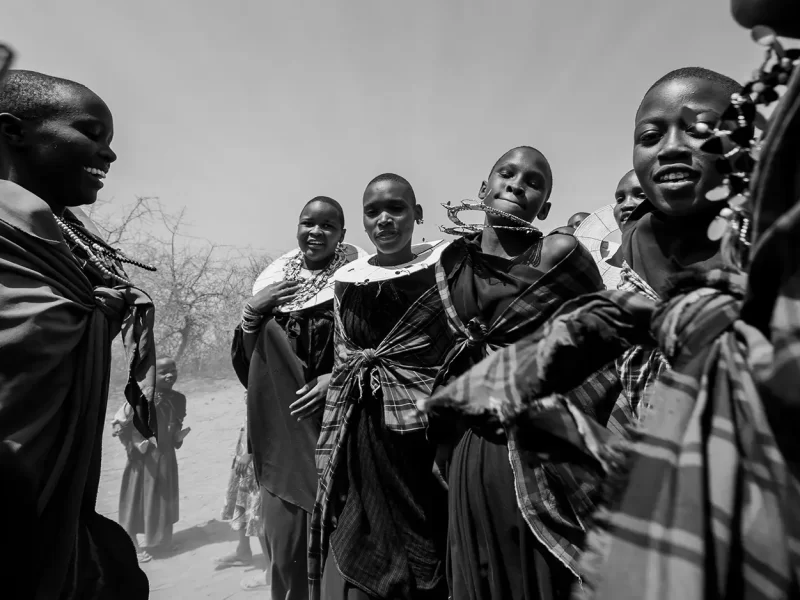
Go on an 8-day cultural safari exploring Tanzania’s diverse traditions and communities. From the iconic Maasai to the Hadzabe hunter-gatherers, immerse yourself in authentic experiences

Discover the thrilling drama of the wildebeest migration river crossing in Tanzania’s Serengeti. Over 10 unforgettable days, witness herds brave crocodile-filled waters, predators on the

Experience nature’s marvel during the wildebeest calving season, when life blossoms across the Serengeti. This 10-day adventure offers incredible wildlife encounters, stunning landscapes, and unforgettable
“A true safari isn’t measured by the number of animals seen, but by the moments that leave you breathless—the first golden sunrise over the Serengeti, the silent stare of a lion, the sheer wonder of untamed wilderness.”

Every safari with us feels like a secret revealed—hidden waterholes, untold stories from seasoned guides, and quiet moments where the wild embraces you in its timeless rhythm.
From the vast Serengeti plains to Ngorongoro’s dramatic crater, Tanzania’s parks amaze. Tarangire’s giants, Manyara’s flamingos, and Lake Eyasi’s untouched beauty add to the magic. Here, wildlife roams freely, landscapes shift, and every corner tells a story of nature’s raw wonder.
The Serengeti National Park, which spans 14,763 square kilometres of unadulterated wilderness, is the epicentre of Tanzania’s safari experience.
The Big Five—lions, elephants, buffaloes, leopards, and rhinos—live freely in the remarkable landscape of golden grasslands, scattered acacia trees, and immense open plains. Here, the Great Migration, one of the most remarkable natural phenomena, occurs, as more than two million wildebeests, zebras, and gazelles migrate in pursuit of more fertile pastures.
This voyage is fraught with peril, as the herds are pursued by lions, hyenas, and cheetahs, while crocodiles await at the Grumeti and Mara Rivers, prepared to strike. The migration shifts across the park, making each region a unique wildlife theatre depending on the season.
The Serengeti’s landscapes undergo a significant transformation following the migration, providing distinct experiences in each zone.
Highlights
✓ Central Serengeti – The central part of the park, home to year-round predator activity and the highest concentration of lions, leopards, and cheetahs. Game viewing is exceptional in every season.
✓ Western Serengeti – Defined by the Grumeti River, this region is famous for dramatic river crossings during the Great Migration, where crocodiles and big cats wait in ambush.
✓ Northern Serengeti – The remote northern section offers breathtaking scenery and is the best place to witness Mara River crossings, a crucial moment in the migration.
✓ Eastern Serengeti – Open landscapes perfect for game drives, known for frequent cheetah sightings and hot air balloon safaris, providing a bird’s-eye view of the wilderness.
✓ Southern Serengeti & Ndutu – The heart of the wildebeest calving season (January–March), where thousands of newborns take their first steps while predators patrol the area.
One of Tanzania’s most exceptional destinations is the Ngorongoro Conservation Area. The Ngorongoro Crater, the world’s largest uninterrupted volcanic caldera, is situated within its 8,292 square kilometres.
About 25,000 animals, including rhinos, elephants, lions, and zebras, are allowed to roam within the crater. It is one of the most exceptional locations in Africa for observing fauna in close proximity.
Additionally, this epic place is a historical site. One of the most significant fossil locations in the world is the Olduvai Gorge, which is situated in this area. Scientists have discovered some of the earliest human remains, which demonstrate the way in which humans lived millions of years ago.
Visitors have the opportunity to explore the crater through game drives, walking safaris, and the study of the Maasai people, who coexist in harmony with the environment. In a breathtaking location, Ngorongoro provides both adventure and comfort through its luxury lodges and tented camps.
Highlights
✓ The Ngorongoro Crater is home to thousands of animals, including rare black rhinos.
✓ Olduvai Gorge is one of the world’s most important sites for human fossils.
✓ The conservation area has forests, grasslands, lakes, and swamps filled with wildlife.
✓ Walking safaris give visitors a chance to explore nature up close with expert guides.
✓ The Maasai people live in the area and share their unique traditions with visitors.
Tarangire National Park is one of the most beautiful and wildlife-rich parks in Tanzania. It is 118 km southwest of Arusha and covers 2,850 square kilometres.
The park is set apart to protect one of Africa’s biggest populations of elephants. It was named after the Tarangire River that flows through it. Massive tuskers are among the elephants that roam openly among the old baobab trees, making for a stunning landscape.
Even though Tarangire isn’t as well-known as Serengeti, it does have its own migration. During the dry season, thousands of zebras, wildebeests, gazelles, and elephants move towards the river. This makes it a great place to see wildlife because it draws animals that eat other animals.
The park is home to over 550 different bird species, such as hornbills, kingfishers, and lovebirds. It is also a great place to watch big games. Tarangire is a must-see for anyone who wants a private and authentic safari experience. In the wet season, it’s lush with grass, and in the dry months, it’s golden savannas.
Highlights
✓ The park has one of Africa’s largest elephant populations, with herds often numbering in the hundreds.
✓ The Tarangire River attracts a migration of zebras, wildebeests, and gazelles during the dry season.
✓ Towering baobab trees dominate the landscape, some standing for over a thousand years.
✓ The park is home to over 550 bird species, making it one of East Africa’s best birdwatching destinations.
✓ Compared to other parks, Tarangire offers a quieter, more intimate safari experience with fewer crowds.
Lake Manyara National Park is a small but diverse wildlife haven in northern Tanzania, covering 330 square kilometers along the Great Rift Valley. The park is named after Lake Manyara, a shallow alkaline lake that supplies animals with water. Its deep woods, vast savannas, and acacia woodlands provide for a memorable safari.
Lake Manyara has many biodiversity despite its size. It has four Big Five—lion, elephant, buffalo, and leopard—but no rhinoceros. The park is known for its tree-climbing lions, which are rare to see. Elephant herds, giraffes, zebras, baboons, and antelopes can be seen, while thousands of flamingos and other birds decorate the lake’s shoreline.
The park offers walking safaris, canoeing (seasonal), and a treetop walkway for forest canopy exploration in addition to wildlife drives. Cultural visits of adjacent Mto wa Mbu village reveal Maasai traditions and culture. Lake Manyara National Park is a must-see for a short yet rewarding safari due to its stunning scenery, plentiful wildlife, and unique activities.
Highlights
✓ The park is famous for tree-climbing lions, a rare and fascinating behavior.
✓ Large herds of elephants, buffaloes, and giraffes roam freely across the park.
✓ Thousands of flamingos and over 400 bird species make it a birdwatcher’s paradise.
✓ Unique activities like treetop walkways, canoe safaris, and walking safaris offer different safari experiences.
✓ The nearby Mto wa Mbu village provides a rich cultural experience with Maasai traditions.
A tiny soda lake on the floors of the Great Rift Valley, Lake Eyasi offers a unique animal safari experience. Birdwatchers adore the lake’s salty waters, which draw flamingos, weavers, and storks. A rare chance to interact with Tanzania’s oldest villages, Lake Eyasi’s cultural history sets it apart from adjacent national parks.
Among East Africa’s last hunter-gatherers, the Hadzabe live on Lake Eyasi. Over 10,000 years, they have lived on hunting, gathering, and archaic survival methods. The Datoga dwell nearby. Farmers and metalworkers, unlike the Hadzabe, make weapons and jewellery from local materials.
A visit to Lake Eyasi is a cultural experience rather than a wildlife-focused trip. Guests can attend a Hadzabe morning hunt, learn about their tools and rituals, and watch the Datoga metalwork. Desert and secluded, it’s an off-the-beaten-path trip for people interested in Tanzania’s unique human history.
Highlights
✓ The lake is home to the Hadzabe people, one of East Africa’s last hunter-gatherer tribes.
✓ The Datoga tribe are skilled farmers and metalworkers, creating weapons and jewelry.
✓ The lake’s salty waters attract flamingos, storks, and many other bird species.
✓ Visitors can join the Hadzabe on a hunting trip and experience their ancient way of life.
✓ Lake Eyasi is a remote and rugged destination, perfect for cultural exploration.
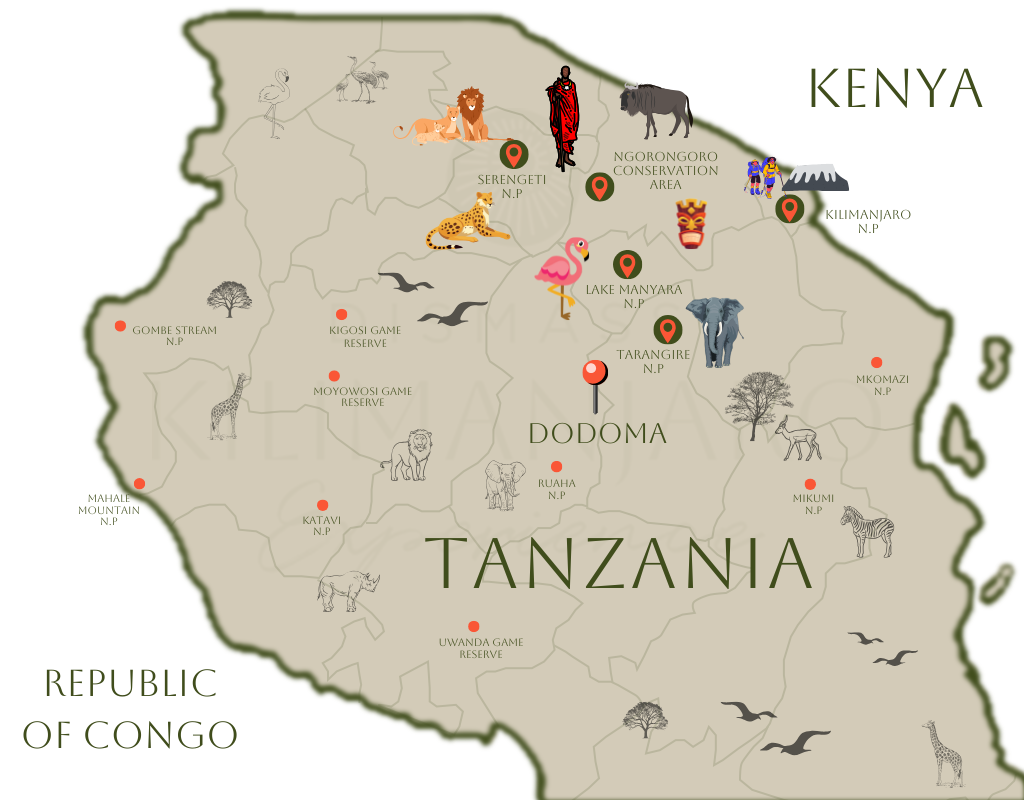
The best time to visit Tanzania depends on the experience you’re looking for. The long dry season from July to October is the most popular time for safaris. The grass is shorter, making wildlife easier to spot, and it aligns with the Great Migration in the Serengeti, where thousands of wildebeests cross rivers while predators wait in ambush.
The short dry season from January to March is another fantastic time to visit. During these months, the wildebeest move south for their calving season in February, when thousands of newborns are born daily. This attracts big cats and other predators, making it an exciting time for safari enthusiasts.
April and May bring the long rainy season, making some trails muddy and certain roads harder to access. However, the dramatic skies, lush landscapes, and fewer tourists make this season appealing for those seeking a quieter, more atmospheric safari experience.
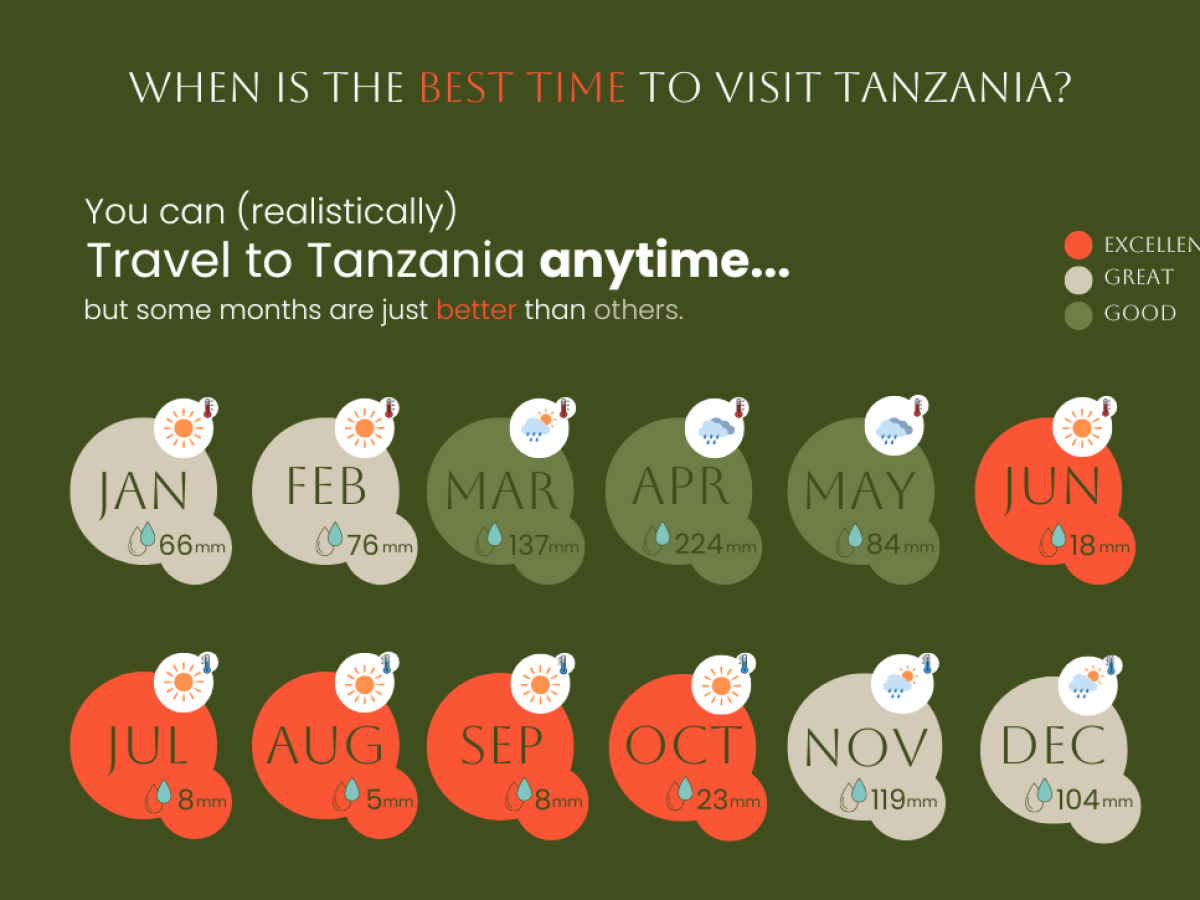
Led by our dedicated manager and expert guides, the Dismass Kilimanjaro Experience team ensures a safe, well-planned ascent. Their knowledge, passion, and support help you reach the summit successfully.




